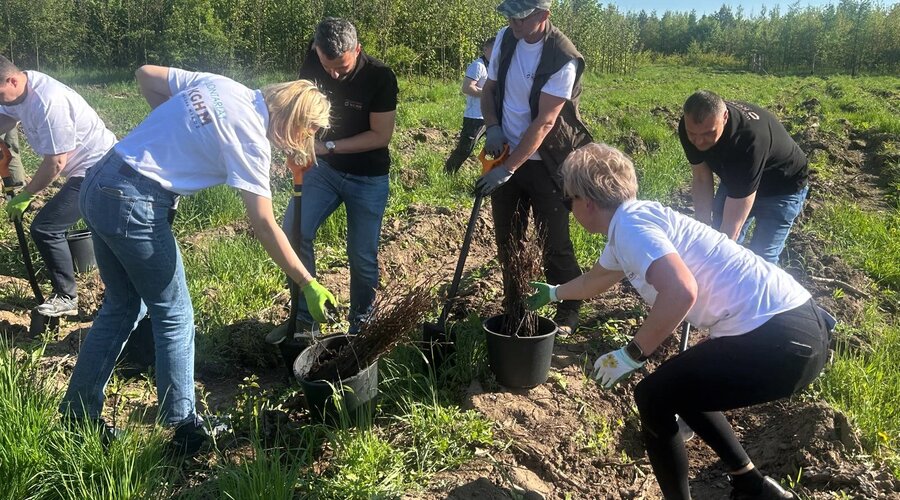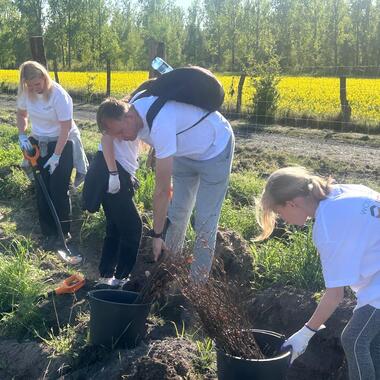KGHM volunteers for the environment - thousands of new seedlings at the Głogów Copper Smelter
KGHM volunteers once again celebrated the World Earth Day by planting thousands of new trees at the Głogów Copper Smelter. The oak and beech trees planted today will fulfil the oxygen demand of the region's inhabitants in the future. KGHM has been carrying out a forest planting programme in the Copper Belt for years. In the last two years alone, the company has planted more than half a million trees and shrubs.
The planting of trees and shrubs by KGHM volunteers is a long-standing tradition. Together with their families and friends, they came to the vicinity of Wróblin Głogowski to work together to plant thousands of new trees that will one day turn into a beautiful forest. In this family atmosphere, everyone was able to make their contribution to building a green Copper Belt. And the youngest participants, with the help of their parents, were able to participate in a practical lesson in ecology.
Our forests
This spring, around 95,000 forest tree and shrub seedlings will be planted in the forest areas of the Głogów Copper Smelter and the ecological use. The planting being carried out is part of the reconstruction, initiated in 2005, of poplar tree stands growing in the area of the former protection zone of the Głogów Copper Smelter. On average, 7,000 seedlings are planted per hectare of the restored area. KGHM actively manages over 1 300 hectares of forest, the largest of which are located at the Głogów Copper Smelter (around 900 hectares), and the Legnica Copper Smelter (nearly 400 hectares).
Due to their natural conditions, particularly noteworthy is the so-called ‘Głogowskie Łęgi’ forest, which occupies an area of over 600 ha between the Odra river embankments. The areas managed by KGHM represent a kind of 'ecological niche' where birds nest, small terrestrial and aquatic animals live and vegetation thrives. Their best-known inhabitants are a pair of peregrine falcons that have chosen the Głogów Copper Smelter as their home.
Natural air filter
The forests around the KGHM divisions provide a natural air filter. Trees are excellent at absorbing and neutralising pollutants and carbon dioxide. KGHM is systematically converting poplar plantings by planting oaks and beeches as the main forest-forming species, which supply the largest amounts of oxygen to the environment.
One hectare of a forest can produce around 700 kilograms of oxygen per day. This is a daily requirement for 2,500 people. In the future, KGHM's forest areas will fulfil the oxygen demand of nearly three and a half million people per day.
Forests also play a very important role in carbon dioxide (CO2) sequestration. According to research, one tree absorbs around 6-7 kg of CO2 per year, and one hectare of a forest sequesters emissions equivalent to the annual emissions of four cars. This means that the forests owned by KGHM and Refinery will absorb the exhaust fumes emitted by more than 5,000 vehicles in a year.








